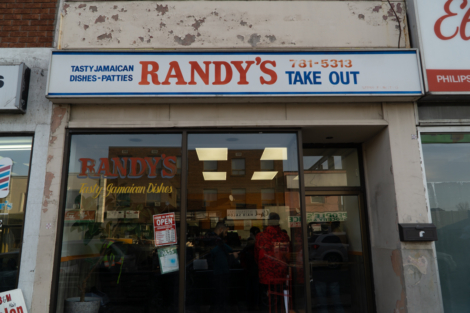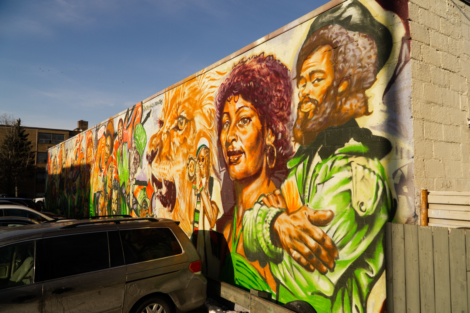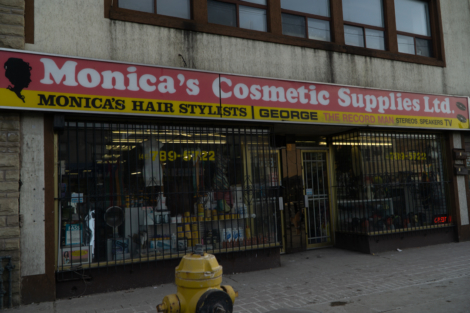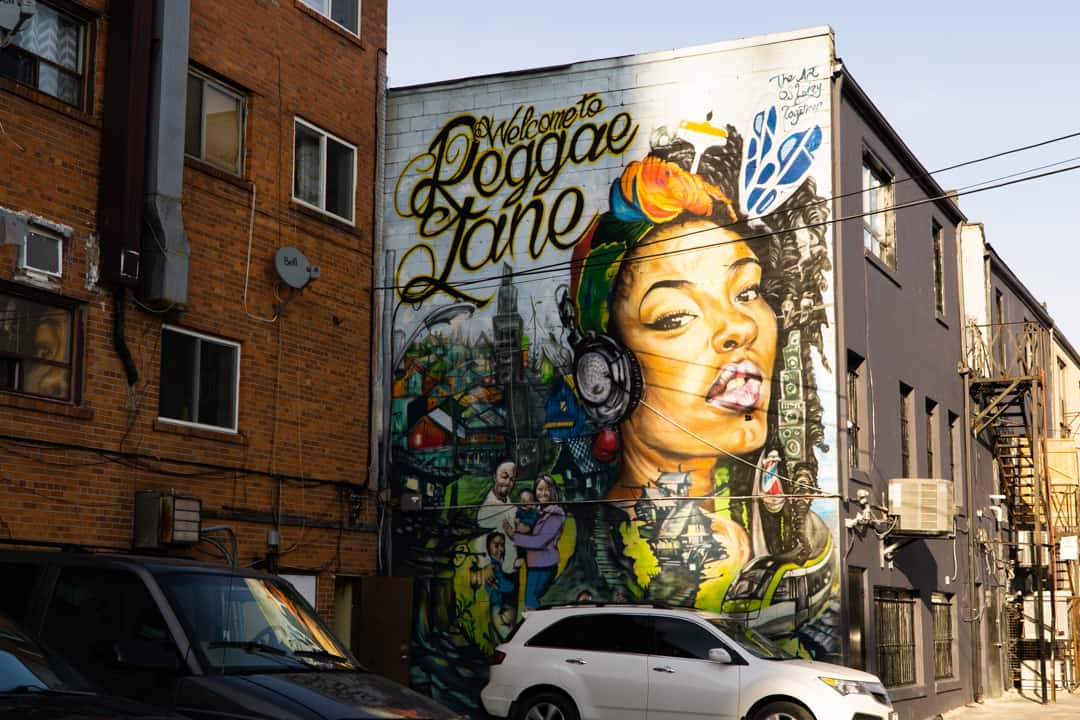Blackness does not exist in a single form. Our experiences differ depending on our upbringing, religion, socioeconomic class, and numerous other factors. One way that these differences in culture arose was as a result of the patterns of Black settlement across Canada’s vast geographical area, developing various Creole cultures and societies.
Dr. Delia Douglas, an instructor at the University of British Columbia, draws on the importance of paying attention to the relationship between geography and Blackness in Canada, and “understanding how past and present exclusions influence the conditions of belonging for Black bodies and Black communities.”
According to the 2016 Census, approximately 3.5 per cent of Canadians identify as Black. And in honour of Black History Month, I want to acknowledge the contributions that Black people have made to the city of Toronto — contributions that have been and continue to be systematically erased through the capitalist practice of gentrification.
Then and now: St. John’s Ward and Nathan Phillips Square
When I think of the past, the pioneers of Black Canada, I think of St. John’s Ward. It’s hard to imagine now, but in the early 1840s, Toronto had a population of approximately 47,000 people. St. John’s Ward, more commonly known as “the Ward,” is typically considered to be Toronto’s first multicultural and multiethnic area. Its modern boundaries consisted of what is now referred to as Toronto’s downtown core, having been concentrated between University Avenue, College Street, Yonge Street, and Queen Street West. The Ward was home to approximately 11,600 people: Irish citizens escaping the potato famine, Jews fleeing persecution in Europe, Italian labourers, and Chinese immigrants.
What most people are unaware of is that the people who started this community of immigrants in the Ward were free Black individuals and runaway enslaved Black people from the United States.

SAMANTHA YAO/THE VARSITY
The 1856 and 1861 censuses found that roughly one thousand Black people were living in Toronto, with half of this population residing in the southern area of the Ward. For them, this space was more than just a geographical Black community; it was the centre of Black culture as well. A Black debate society met every Monday evening at 120 Yonge Street. The African Methodist Church was a centre of the community and spiritual life. There were shoemakers, taverns, and Black-run businesses.
The Ward and its high immigrant population was primarily transformed by the introduction of the subway system in 1954. This rich history was physically erased through the process of gentrification and ideologies of renovating and improving ‘run-down’ or ‘ghetto’ neighbourhoods inhabited by low-income earners in order to attract an influx of wealthy earners into the area.
As the urbanization of the downtown core began, working-class immigrants were pushed out of the Ward. Originally a neighbourhood for racialized people and low-income earners, Toronto developed the area into some of the most expensive real estate in Canada.
Now, the Ward houses Nathan Phillips Square, Toronto City Hall, and countless condominiums. Nevertheless, you can find little remnants sprinkled about of what it once was. There are several plaques in and around the area of the Ward which were installed by Heritage Toronto to acknowledge the influence of the Black community. These plaques commemorate the African Methodist Church, Albert Jackson, Mary Ann Shadd Cary, and St. Lawrence Hall.
Furthermore, as part of their Myseum on the Move program, the Myseum of Toronto strives to keep the history of the Ward alive through their Women of the Ward Tour, which was created in 2019. Through theatrical presentations and animated speech, the walking tour is meant to explore Toronto’s first immigrant neighbourhood and unveil a part of Toronto’s history that often goes unnoticed.

SAMANTHA YAO/THE VARSITY
During the tour through what used to consist of the Ward, participants encounter the experience of four resilient women from the Chinese, Jewish, Irish, and Black communities whose stories contribute to the history of the former neighbourhood. The dramatization of Cecelia Jane Reynolds’ life tells her story of joining the Black community in Toronto after escaping slavery in the United States. Written by Audrey Dwyer and performed by Meghan Swaby, the monologue describes her ongoing correspondence with her former owner as she attempts to obtain freedom for her mother and brother.
“I am not the worst child on God’s green Earth,” the monologue says from Reynolds’ perspective. “I came up here with barely the moon to light my way.”
Little Jamaica and me
In recent years, the iconic neighbourhood of Toronto’s Eglinton West, also known as Little Jamaica, has been run over with the construction of the Eglinton Light Rail Line (LRT). As real estate prices have skyrocketed, the displacement of businesses and residents can visually be observed within the area.
The history of Little Jamaica is rich. During the ’70s and ’80s, close to 100,000 Jamaican immigrants came to Canada, and many of them settled in Toronto, specifically the area around Eglinton Avenue West and Oakwood Avenue.
My dad is one of those immigrants, having chosen to settle down in Cambridge, Ontario, about an hour and a half outside of Toronto. I remember him telling me about the first time he went to Little Jamaica, and how it felt just like home. Since there were no West Indian barbers in Cambridge, he would head down to Eglinton on the weekends for a haircut, get the oxtail with rice and pea lunch special at Spence’s Bakery, and stop by the King Culture record store before heading home.
“If you wanted to find someone you haven’t seen in a while, go there on a Saturday, and you’d find them,” he once said.
On weekends, Eglinton was the place to be. The streets were always busy and filled with people from the Caribbean diaspora walking to the various Black immigrant-owned shops and restaurants. The community was filled with not only those from Toronto but with people like my dad, who lived outside of the GTA and yearned for a sense of belonging.
Growing up, my dad would take me to Little Jamaica alongside him as he continued his Saturday tradition. I recall the sights, sounds, and smells of our adventures: the charcoal smoking from drums cooking jerk chicken, friendly exchanges of Patwah — also known as Jamaican Patois — between folks on the street, and the vibrant yellow, green, and black flags proudly representing our nation.
No trip was complete without stopping at Randy’s Patties, which is now called Randy’s Take-Out. The ladies behind the counter who watched me grow up had felt like my aunties. After grabbing our usual, which was a piece of freshly baked coco bread, a chicken patty, and an ice-cold D&G Kola Champagne soda, we would head to the nearby beauty supply store, Monica’s Beauty Salon & Cosmetic. I would pick up hair products for my mom, the ones that you could only get in Toronto, while my dad chatted with the man selling Jamaican DVDs and CDs at the corner.

SAMANTHA YAO/THE VARSITY
Today, only a small fraction of this neighbourhood remains. The city has made some attempts to preserve the historically Black space with the creation of Reggae Lane and a commissioned mural which runs east of Oakwood Avenue, behind a strip of buildings on the south side of Eglinton Avenue.
The construction of the Eglinton Crosstown LRT will run along Eglinton Avenue between Mount Dennis and Kennedy station. The line is slated to have up to 25 stations and stops. In response, Black-owned businesses have become empty storefronts looking for new renters who can afford their high prices.
I can see the past being repeated in the present.
To understand how Canada became one of the most culturally diverse countries in the world, we need to look to the histories of the Ward and Little Jamaica to gain a clearer understanding of how the contributions of Black Canadians in the past have shaped the present.
After all, when I reflect on the pioneers of Black Toronto in St. John’s Ward and the gentrification that soon followed, it saddens me to think that future generations may never know Little Jamaica. Just as the Ward was home to more than only Black people, Eglinton is more than just an area for the Jamaican and West Indian community. It’s a space where we can gather as a collective; it’s a place where we can feel celebrated.


